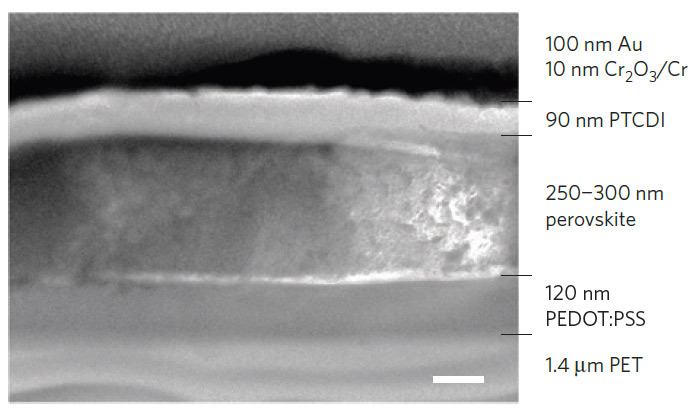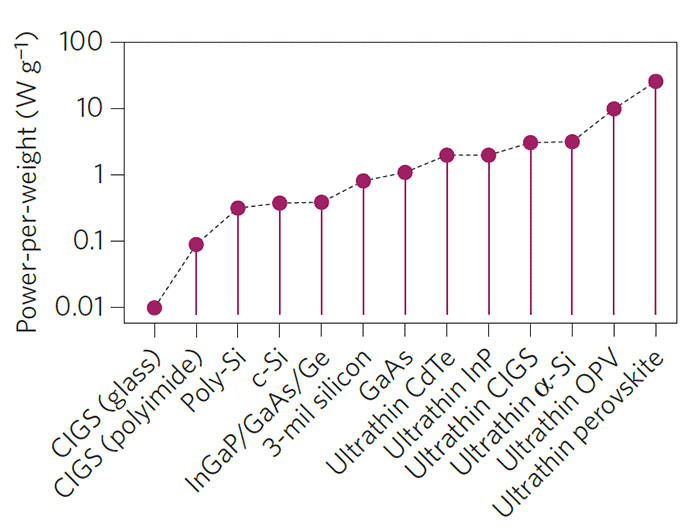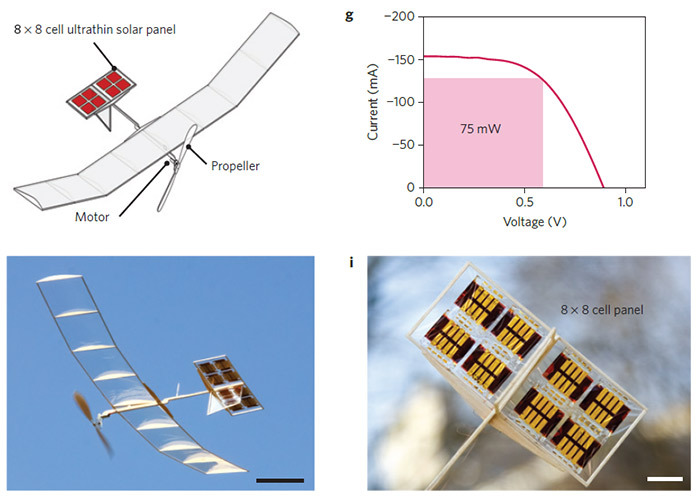Perovskite photocells: five grams per square meter

Perovskite foil. A scale line of 1 cm
Apparently, perovskite solar cells instead of silicon are becoming one of the most promising technologies for manufacturing solar panels. It is dangerous to conduct such research in Russia , but foreign scientists have achieved some success.
In April 2015, a study was published evaluating the energy efficiency of perovskite solar panels ( pdf ). The authors showed that perovskite theoretically surpasses silicon in the ratio of energy consumption to generated energy. Silicon solar panels take about two years to recover the energy spent on mining and refining the mineral, manufacturing and installing batteries.
Perovskite panels pay off in two to three months.
Perovskite photocells have an efficiency of only 11-12% - this is less than that of silicon analogues. But all the same, perovskit is an order of magnitude more profitable in terms of energy efficiency.
Perovskite panel technology is progressing very rapidly. In addition, the possibility of manufacturing a current-generating film with a thickness of several micrometers opens up absolutely stunning new opportunities. Such ultra-thin flexible foil with a thickness of 3 microns has just recently been made by chemists from the University of Linz. Johannes Kepler (Austria). The article was published on August 24, 2015 in the journal Nature Materials ( pdf ).
The Austrians were able to significantly optimize the manufacturing process for the manufacture of solar cells and increase the stability of the chemical in the air. That is, now the time-consuming and expensive encapsulation is not needed: the panels work without a protective shell. Chemical stability in the air was achieved through the use of a layer of chromium and chromium oxide, which protects the upper metal contacts from reaction with perovskite.


Perovskite foil has a thickness of only three micrometers. Not surprisingly, the material demonstrates a phenomenal rate of energy efficiency: 23 watts per gram.

A square meter of solar cells weighs only 5.2 grams and generates 120 watts of power!
The inventors propose using lightweight foil for powering unmanned aerial vehicles (from large airplanes to small quadrocopters), meteorological probes and balloons with video cameras such as the Eye, which are continuously in the air and monitor the territory.

For reference. Perovskite is a relatively rare mineral on Earth, calcium titanate. Empirical formula: CaTiO 3 . First discovered by the German geologist Gustav Rosa in 1839 in the Ural Mountains and named after the Russian statesman Count Lev Perovsky, who collected minerals. Science magazine included perovskite in the top 10 breakthroughs of 2013 , implying the possibility of its use in solar energy.
